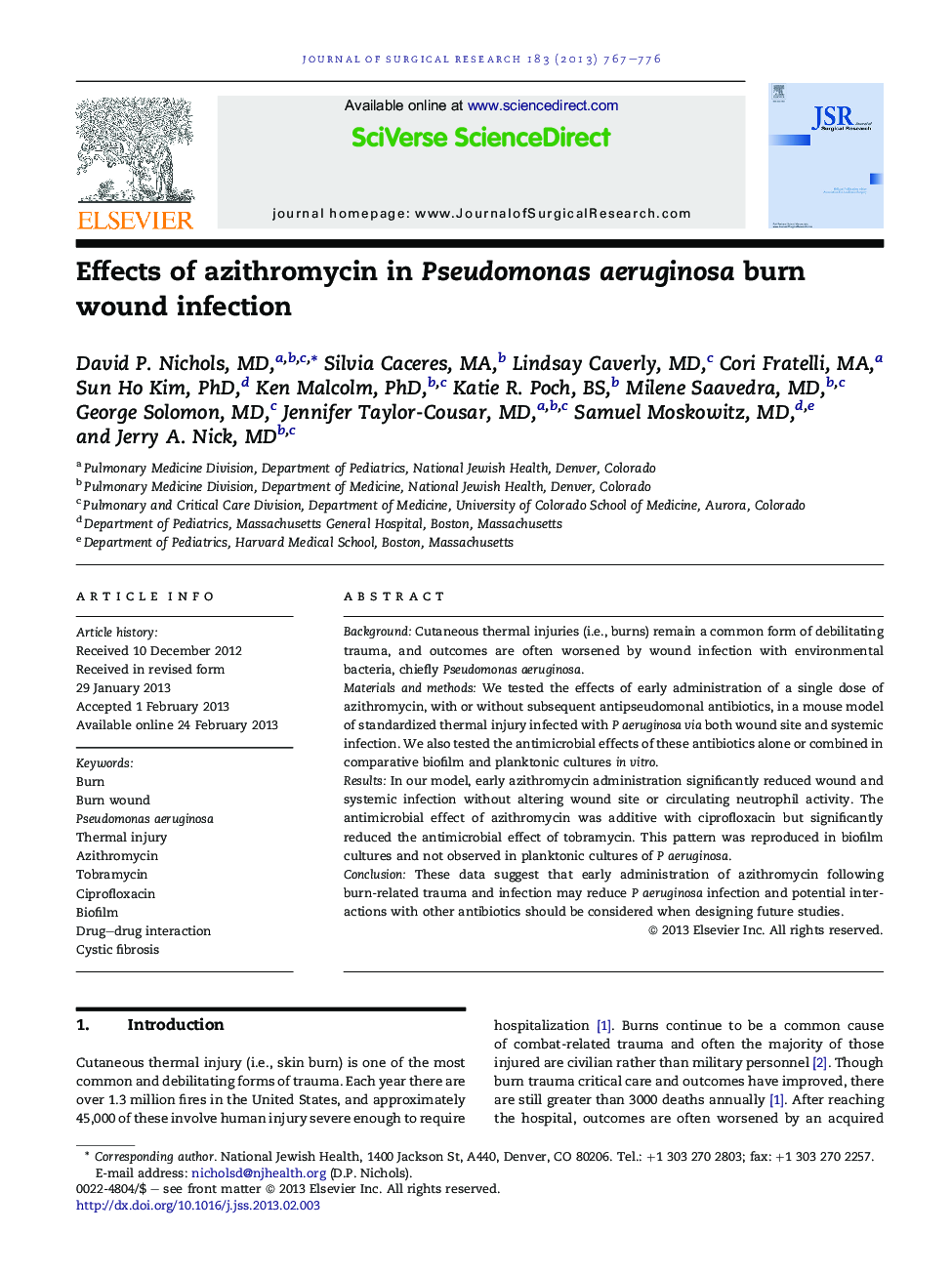| Article ID | Journal | Published Year | Pages | File Type |
|---|---|---|---|---|
| 4300890 | Journal of Surgical Research | 2013 | 10 Pages |
BackgroundCutaneous thermal injuries (i.e., burns) remain a common form of debilitating trauma, and outcomes are often worsened by wound infection with environmental bacteria, chiefly Pseudomonas aeruginosa.Materials and methodsWe tested the effects of early administration of a single dose of azithromycin, with or without subsequent antipseudomonal antibiotics, in a mouse model of standardized thermal injury infected with P aeruginosa via both wound site and systemic infection. We also tested the antimicrobial effects of these antibiotics alone or combined in comparative biofilm and planktonic cultures in vitro.ResultsIn our model, early azithromycin administration significantly reduced wound and systemic infection without altering wound site or circulating neutrophil activity. The antimicrobial effect of azithromycin was additive with ciprofloxacin but significantly reduced the antimicrobial effect of tobramycin. This pattern was reproduced in biofilm cultures and not observed in planktonic cultures of P aeruginosa.ConclusionThese data suggest that early administration of azithromycin following burn-related trauma and infection may reduce P aeruginosa infection and potential interactions with other antibiotics should be considered when designing future studies.
